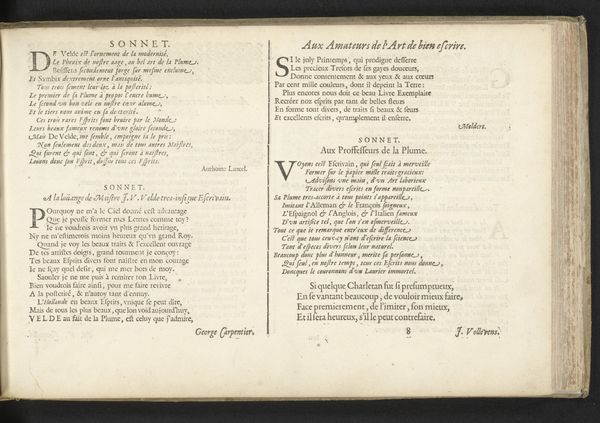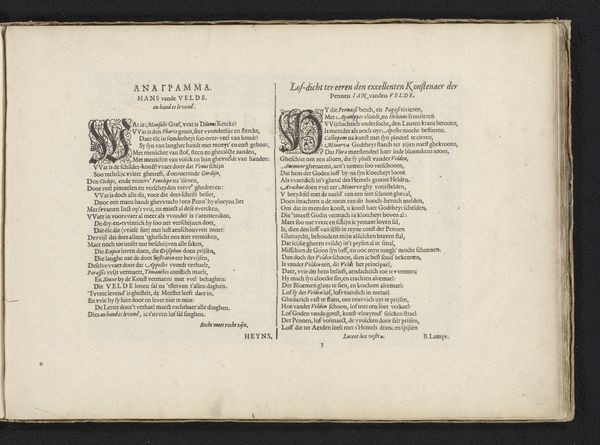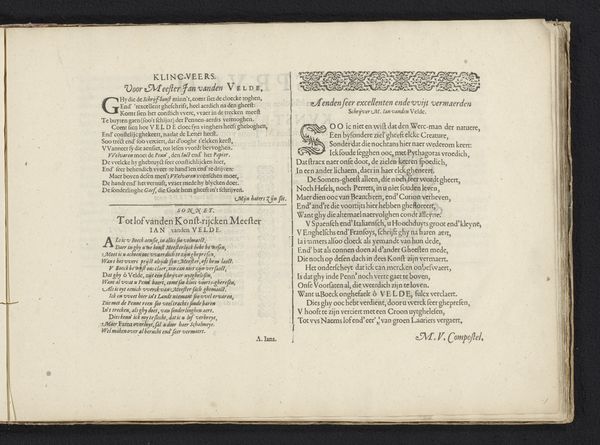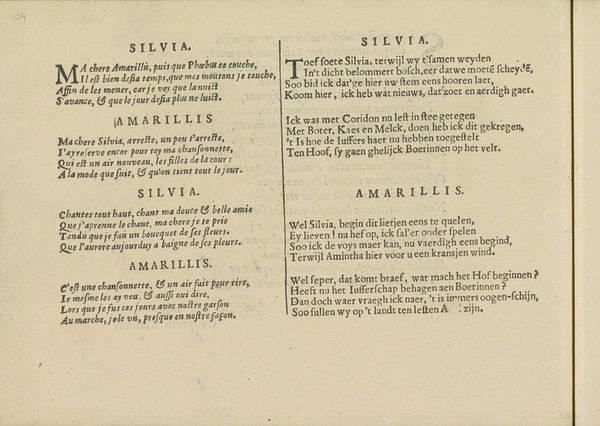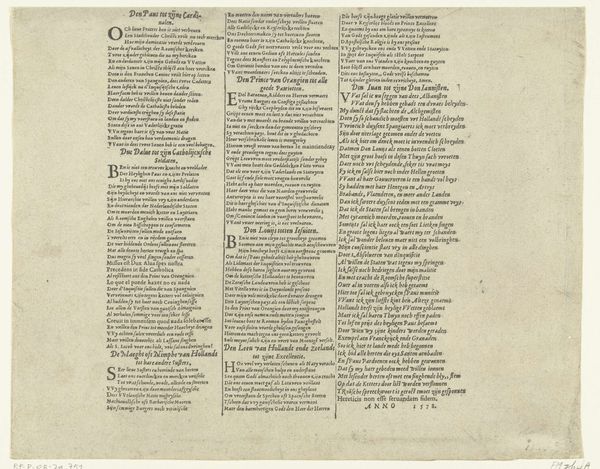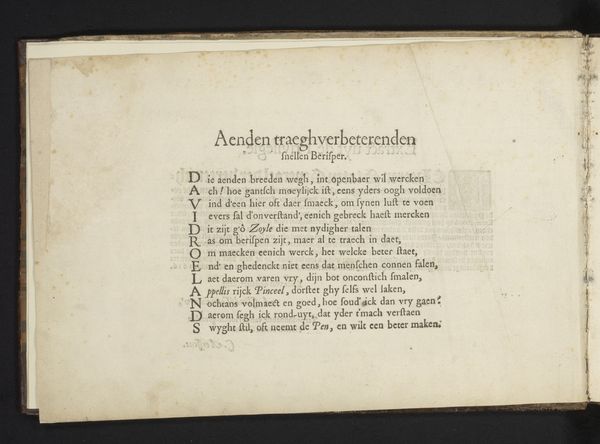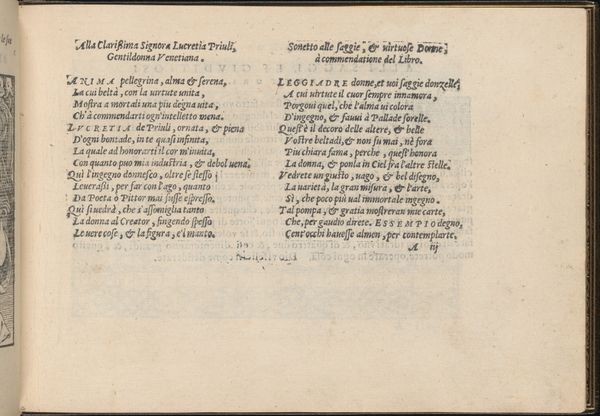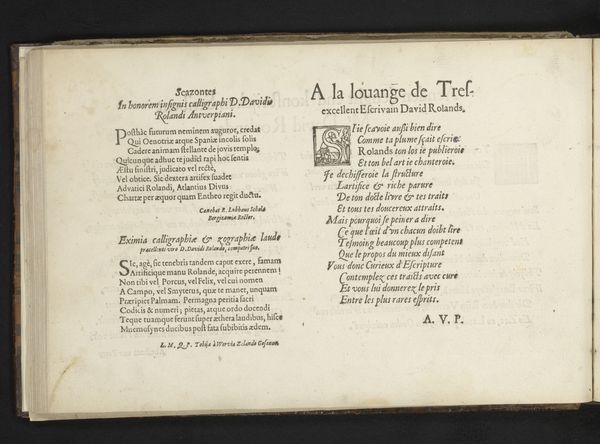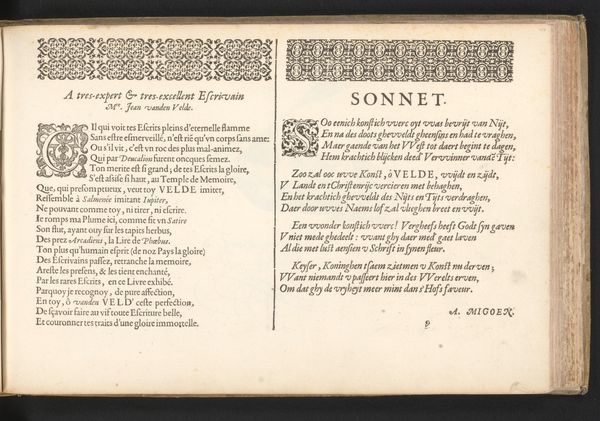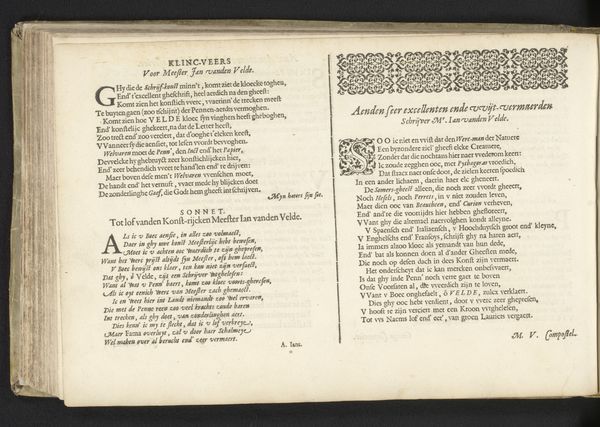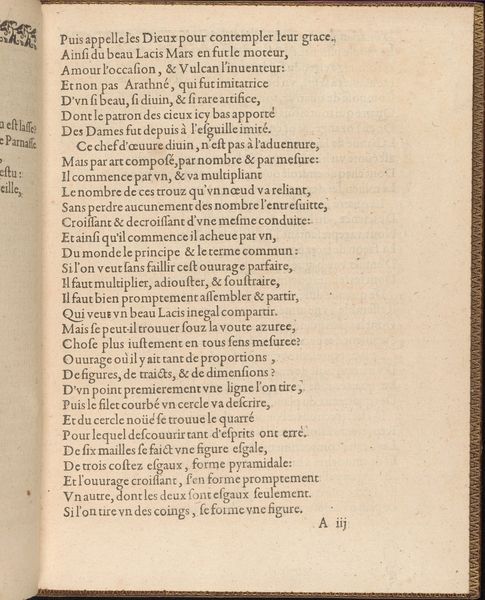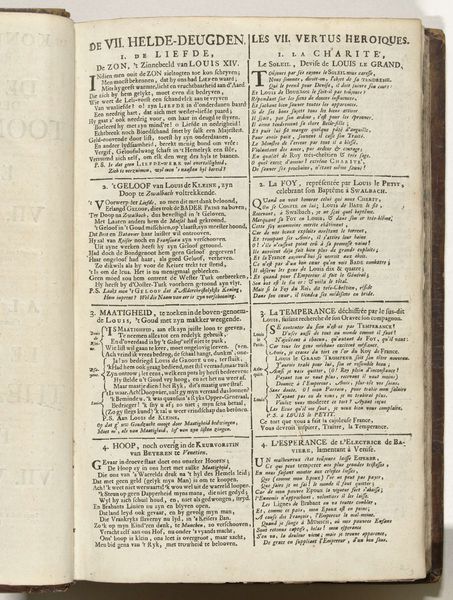
print, paper, typography, engraving
# print
#
paper
#
11_renaissance
#
typography
#
engraving
Dimensions: height 210 mm, width 315 mm
Copyright: Rijks Museum: Open Domain
Curator: Here we have a 1605 print titled "Twee Nederlandstalige drempeldichten," or "Two Dutch Threshold Poems," by Zacharias Heyns. It features engravings alongside typography. My first impression is that this piece pulses with controlled energy—there's so much intent packed onto the page, even without deciphering the Early Modern Dutch. What are your immediate thoughts? Editor: Controlled energy is a great way to put it. I'm struck by the deliberate nature of it all—the lead in the type, the rag paper. You can almost feel the pressure of the press and imagine the hand setting each letter, making slight but vital impressions that are multiplied by a larger print run. I’d really love to examine the fibers of the paper stock—is it local, is it imported, how has this shaped its accessibility to consumers? Curator: Indeed, a closer look at materiality enriches the viewing. Heyns, both the printer and the poet of the first poem, clearly wanted to establish Jan vanden Velde’s importance. It is a celebration of Jan, framed almost like an offering. Note the monogram; the poem casts Jan's work within a classical pantheon, invoking figures from Greek mythology to underscore his mastery. It even claims Jan's praise surpasses even the gods’ capacity for art! Editor: That claim says as much about Heyns, and the larger early publishing scene, as it does about Van Velde. What did prints like this circulate amongst broader populations? Was there any concern around artistic merit—did people buy the poem as a status symbol, or would it become ephemeral? I imagine this print might have been acquired through varied economies from commissioned sale to even trades; but I think the work’s initial material worth quickly diminishes through consumption and exchange. Curator: I disagree slightly about diminishing returns. Heyns makes constant connections between letters, craft, and skill. It establishes a kind of immortality in his poetry – or, at least, a longer life that creates ripples down through later generations through an accumulation of material value – because we are literally talking about it now. The very act of preservation, in this case through the printing press and libraries, demonstrates how the work accumulates meaning and value over time. Editor: A fair point; time indeed adds its own layer to value creation! What do you take away from Heyns’ poem beyond simply being celebratory, personally? Curator: I find a comforting echo of human ingenuity and the ambition to be remembered – maybe that is the most human ambition, now that I think about it. And on the other side of the spread, we have another poem to chew on, too.
Comments
No comments
Be the first to comment and join the conversation on the ultimate creative platform.
